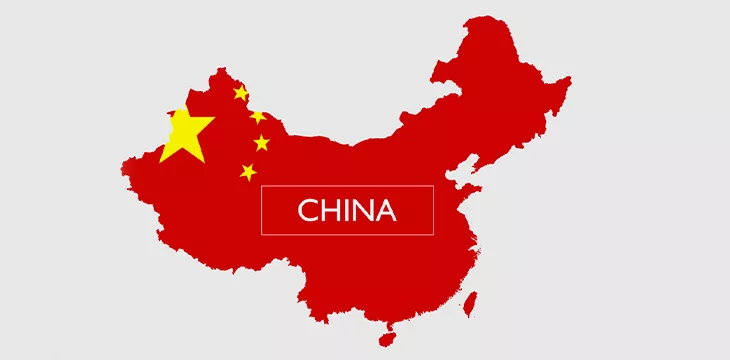Book lovers, rejoice! Non-fungible tokens (NFT), also known as crypto collectibles, have launched thousands of literary projects on the blockchain. These NFTs have created a new way to collect and enjoy your favorite books, poems and articles.
But what exactly are literary NFTs, and how do they revolutionize the way we experience literature?
What is a literary NFT?
Traditional publishing has been successful for a long time. According to a report by Grand View Research, the industry was estimated at $138.5 billion in 2021 and is likely to reach $142.33 billion in 2022 and $164.22 billion in 2030.
However, there has been a growing need for a more open and decentralized publishing system, and this is where literary NFTs come in.
A literary NFT is a digital work of literature (such as a poem, book or article) imprinted on the blockchain. In other words, the work exists on decentralized computer networks, making it resistant to censorship. In addition, the work cannot be changed without the author’s permission.
The versatility of literary NFTs adds to their beauty and significance. They can function as a digital collectible, exhibit a written work, or serve as access to exclusive fan communities. There are even cases where the creators release individual NFTs of fictional characters.
How do literary NFTs work?
Literary NFTs exist on a blockchain, a public ledger that records crypto transactions and ensures their effectiveness. While other blockchain networks support Literary NFTs, the Ethereum blockchain has the largest number of Literary NFTs.
You can create a literary NFT from digital objects, including intangible and tangible objects. They are similar to physical collectibles, except they are digital. Therefore, you get a digital file instead of a book to place on the shelf or library.
In addition, buyers get exclusive rights to NFT. The reason is that NFTs only have one owner at a particular time. Their unique data makes it easy to verify ownership and transfer tokens between owners.
Furthermore, the owner can store specific information inside the NFT. For example, you can sign your work by including your signature in NFT’s metadata.
Projects exploring literary NFTs
Although literary NFTs are still in their infancy, several NFT projects have emerged since 2021 from well-established and independent creators.
Why are literary NFTs valuable?
E-book piracy has been on the rise for years. It may not sound like a big problem, but authors lose thousands of dollars annually to people who illegally copy and distribute their e-books.
When authors create special collector’s editions of one of their titles, they want to avoid this piracy problem. That’s because the value of a collector’s edition will plummet if more new versions appear on the market.
Literary NFTs are valuable because only a limited amount of an author’s work is available at any given time. Furthermore, a proper blockchain-published title is encrypted and decentralized, stored in chunks on multiple computers in a process called Decentralized Encrypted Asset (DEA).
The reader who opens the book collects all the pieces and decrypts them. After that, it presents the book to you in a readable format. With such enormous protection, books on the blockchain are more valuable than regular e-books.
What NFTs Can Do for Writers
Literary NFTs also provide authors with a number of benefits.
Creative freedom
Literary NFTs allow writers to experiment with publishing formats, especially those with a tantalizing interest in technology. Due to the decentralized nature of NFTs, authors can explore different book formats without worrying about publishers’ opinions.
Take Blake Butler, for example, who released his book titled Decade in February 2021. Butler wrote the book in 2008, but commercial publishers rejected it because of its “dense language and complicated structure.”
Blake Butler turned the book into a Graphics Interchange Format (GIF) with flashing pages and embossed it as an NFT. With NFT, Butler self-published and sold his work. Overnight someone bought NFT for 5 ETH (Ethereum), which was $7,569.50 then.
Permanent ownership
NFT books are receipts for digital books in your possession. This quality distinguishes literary NFTs from e-books that you can buy from online e-book stores such as Amazon or Barnes and Noble.
E-books purchased from Amazon and the like are only available as long as the platform is operational and agrees to offer it. However, having a literary NFT is like owning a physical copy of a book. When you buy it, it becomes your own and will not disappear due to any third party.
Additionally, with NFTs, you can own a specific copy in a series of other copies, like how you can own different editions of physical books.
A new form of interaction between reader and author
Literary NFTs help authors build solid relationships with their buyers. Authors can create hype around their books and use NFTs to offer unique features, such as illustrations, author notes, and special forewords to their readers.
Furthermore, authors can publish limited copies of their literary pieces using NFTs. This can help them engage with readers and increase the value of their works.
Revolutionize literature with literary NFTs
With an understanding of what literary NFTs are, how they work, and the benefits they offer, you can rewrite the Web3 publishing narrative. Your creativity will go a long way to achieve this and we’d love to see what you achieve with it.
So what are you waiting for? Start your literary NFT journey today.





















![Doubts about Bitcoins [BTC] short term gains? Consider this Doubts about Bitcoins [BTC] short term gains? Consider this](https://www.cryptoproductivity.org/wp-content/uploads/2023/04/AMBCrypto_As_you_drive_down_the_winding_road_the_fog_begins_to__5f145a86-c87c-45bd-b37e-137320b6dfe9-1000x600-120x120.jpg)






